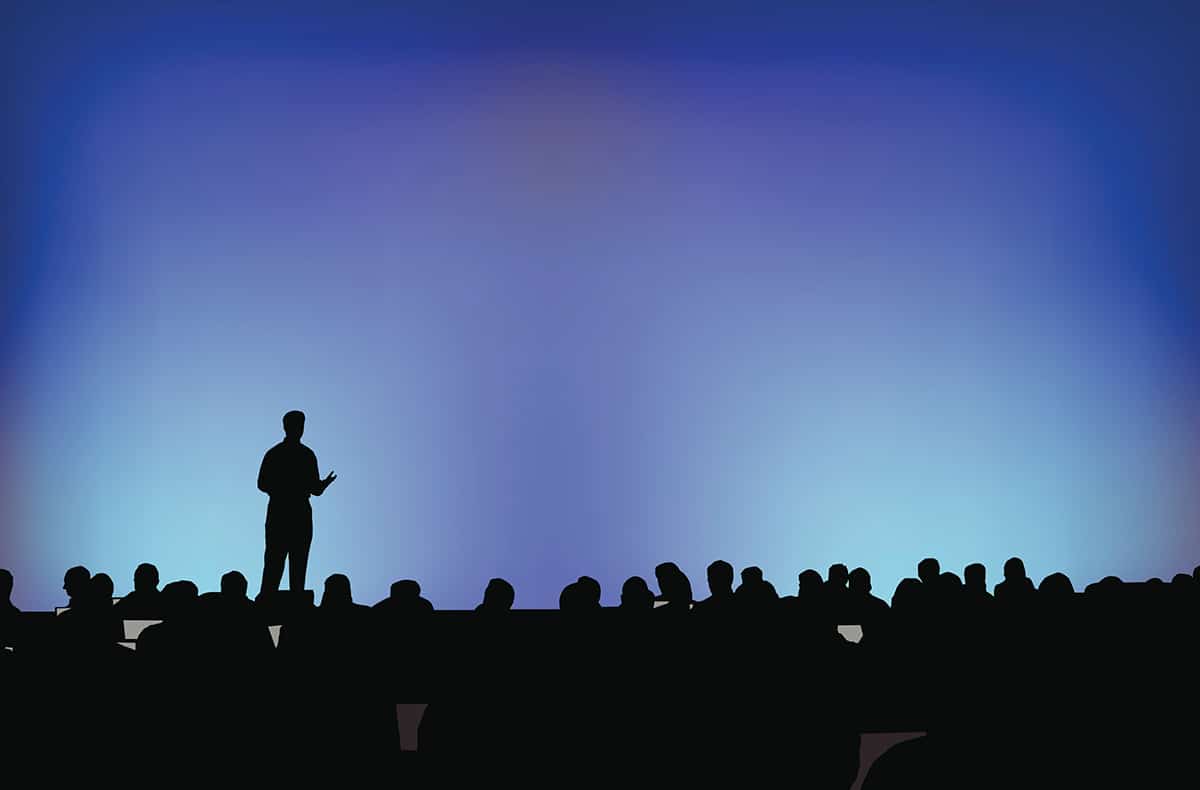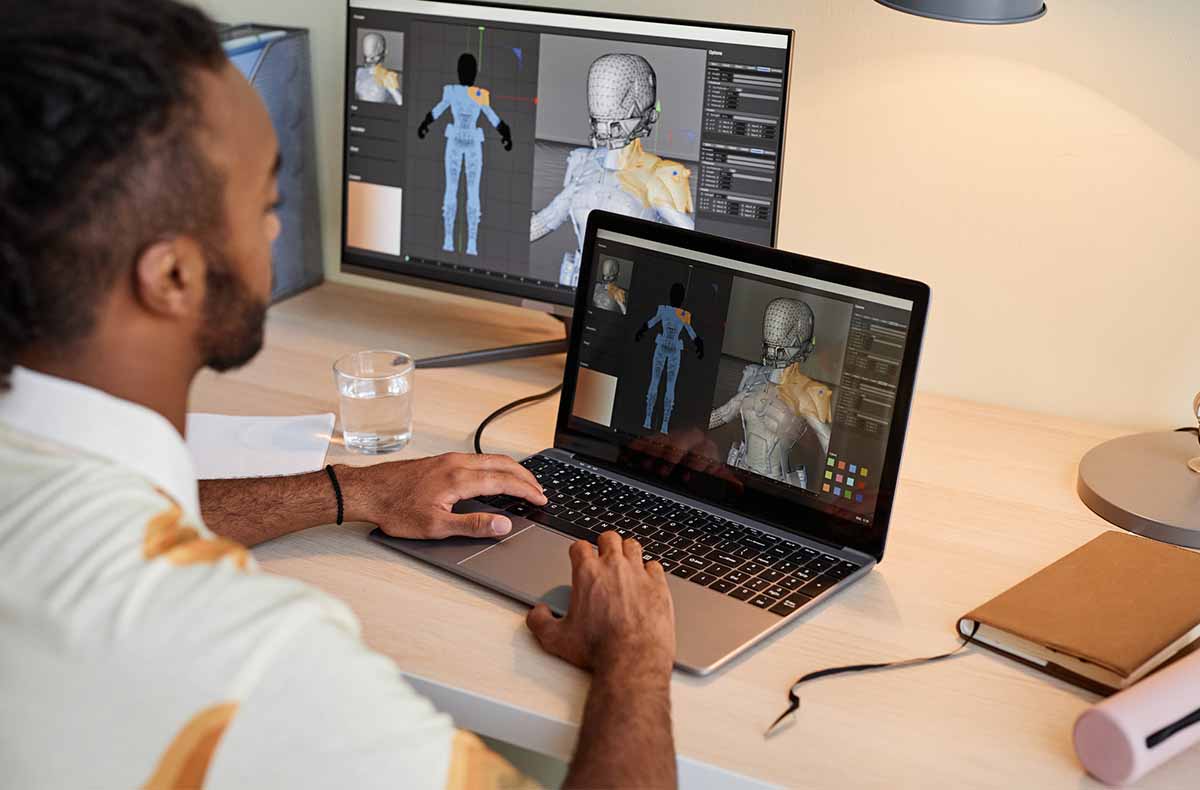
Picking up the phone, I heard my friend, John: “What are you doing for the next four days?”
“What?” I asked. He explained he was headed to Monterey, California, and invited me to join him on an adventure. “I’ll be there to pick you up in ninety minutes. You don’t want to miss this.”
John said he was headed to a conference, and as a sponsor, he could bring a guest. He said he couldn’t think of a better person to join him than me. We were both founders of companies that created visual effects software. He told me the conference drew in many people I knew from the industry, and it would be a memorable four days. “Ok. I’m intrigued.” Ninety minutes later, he picked me up in Santa Barbara, taking me to my first TED Conference.
Once there, it became clear John was right: this was precisely the type of gathering I didn’t realize I’d been missing all my life. I was initially intimidated by the intellectual star power, then reminded myself I’d been invited and didn’t need to fuss about imposter syndrome. So why had I not heard about TED before this? TED stood for technology, entertainment, and design, and clearly, I’d been focused on those three pillars as the co-founder of Wavefront.
That was twenty-nine years ago. The very first TED was in 1984, founded by Richard Saul Wurman and Harry Marks. Back then, TED was like a secret society, with a very Fight Club-like rule—The first rule of TED is you don’t talk about TED. Seriously: Richard believed speakers would not be forthcoming and vulnerable if they knew their stories would be reported or viewed outside the room. The sense you might miss something made in-person attendance even more vital, and led to the phenomenon where the following year’s conference would sell out by noon on the second day. The rule about secrecy was made crystal clear one year, when the editor of a major magazine was asked to leave on the second day when he mentioned TED in a blog post about his experience at a “small conference in Monterey.”
Those early years and the intimate venue contributed important annual touchpoints for me, each anchored in the memory of being in the audience for a specific talk. However, it wasn’t until years later when some of those early talks were released online, that friends would send me a screenshot showing me in the audience that I recognized the significance of the yearly vacation for my brain.
When TED was sold to Chris Anderson a few years later, we were interested in his attention to not upsetting the vibe that made the event so special. He deliberately chose the title of Curator for himself as he said his role applied both to speakers and attendees. In an early conversation, Chris said he didn’t see a difference between an attendee and a speaker, as once a talk was done, the speaker became an attendee and could easily be sitting next to you in a later session. This drew me even tighter into the fold.
Chris wanted to create a community around the idea of TED and extend relationships beyond the four days in California. So my partner Kymberlee Weil and I worked with Peter Goldie—then of Macromedia and a sponsor of TED—to devise a rich internet application that would bring the community together in an innovative way. We developed a matching algorithm to make visual connections based on your values and what you seek in life, rather than experiences and other commonalities. We were looking to solve a challenge we all experienced each year; every person at TED is interesting, yet you can’t meet everyone. So the trick was finding the ten people you were most likely to connect with based on ideas and your shared values. Chris was convinced these connections would last well beyond the days in Monterey. He wasn’t wrong.
A few years later, once the Internet was able to stream video, the decision was made to invert the model from secrecy to one of openness and post the first five TED talks. Those talks went on to gain over a million views in just ninety days, which proved there was an audience for ideas beyond the confines of the live audience.
Each year, we would return home from our week at TED and try to explain to our friends what we’d just experienced, and words continually failed us. Even as TED Talks became more readily available, the whole experience of being in the room during the talk and having deep conversations afterward had to be experienced in person. Attendees would ask Chris after each successful TED, “How could we bring this same feeling to our hometowns?”
In 2009, after a year of work figuring out how to extend the TED brand beyond the once-a-year conference, TEDx was born. The first TEDx was held at USC and was a collaborative effort between the University and Lara Stein, the original person in charge of TEDx. The X stands for “Independently Organized Event.”
The original idea behind TEDx was to democratize the conference and allow anyone to produce a TED-style event. Once accepted as an Organizer, you agree to a special license with clear guidelines that preserve the brand’s ethos, allow for cultural creativity, and expand the TED experience to thousands of people who might never be able to get to the annual event in Vancouver.
Kymberlee and I became one of the earliest TEDx organizers. Over ten years, we produced 100 talks with nearly 35 million views. I currently produce a weekly TEDxSalon series called Making Waves: Conversations with Influencers and Disruptors, which provides a venue for talking about the pandemic, social justice, sustainability, technology, and creativity. This virtual event, developed during the COVID lockdown, has allowed the Santa Barbara creative community to stay connected.
Over the years, the TED brand has extended to include several vital initiatives. TEDx has brought the experience to over 13,000 events in over 150 countries. The TED Fellows program was founded to give “future-shapers” the support needed to do significant research and report back to the TED Community each year at the annual event. In 2012 TED-Ed and their counterpart TED Clubs were founded to improve presentation literacy in the world’s youth and provide teachers an easy way to create lesson plans based on TED Talks. The live events have grown to include TEDWomen, TEDGlobal, and TEDSummit. A group of over 33,000 volunteers has translated 120,000 talks into over 116 languages. There are now seven podcasts created by members of the TED community covering a wide variety of topics; the most listened to would be the TED Radio Hour on NPR.
Yes. That’s a lot of TED. However, the story has one more chapter. My journey to the Red Circle happened in 2018 when I was invited to present as the closing speaker at TEDxFargo in front of 4,000 people. As the producer of a TEDx event, we’re not allowed to give a talk at our show. My role has been to curate ideas and do whatever it takes to get those ideas out into the universe. So giving a talk myself was not in the cards—that is, until a live session of Hacking the Red Circle, my podcast for TEDx organizers, when a fellow organizer invited me to Fargo the next year to give my own TEDx talk.
I was shocked at how difficult this turned out to be. I had a year to plan. I was intimately familiar with the format, and I had been in the audience for nearly 900 talks. So how hard could it be? Turns out it’s very challenging—maybe because I understood the stakes. You can think of TED as the Olympics of public speaking. In those 12-18 minutes, you have to demonstrate you’ve been able to design, develop and deliver the talk of your life. A TEDx talk suggests you have an idea the world needs to hear and needs to hear now and that you are the best person to bring the idea to the stage.
After months of work, I made the walk to the Red Circle. Kymberlee, a speaking strategist, told me just before I walked out: “Remember, you only have to change one mind.” Reframing the stakes helped settle my nerves as I looked over the 4,000 faces staring at me from the arena. After the event concluded, a young man walked up to me and said, “Your point of view validated that I am not the only person in the world who looks at problems in a visual way. Thank you.” My talk was titled See What You Think, a visual guide to creative problem-solving. That year of intense work helped me empathize with the speakers who have been on our stage and those preparing right now for a TED talk.
If you can reach just one person and help them change the course of their life through an idea you are sharing, the effort is worth it. The one person in this story who changed was me—by saying yes to the phone call to take an adventure.


